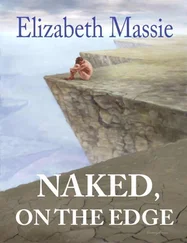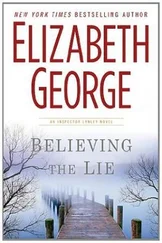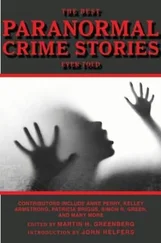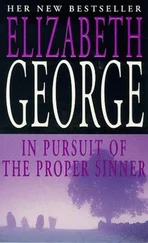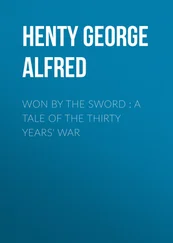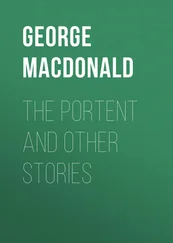“I just want you to come in here a minute, George. We ought to take a look at these windows.”
“Oh — windows,” said the county attorney scoffingly.
“We’ll be right out, Mr. Hale,” said the sheriff to the farmer, who was still waiting by the door.
Hale went to look after the horses. The sheriff followed the county attorney into the other room. Again — for one moment — the two women were alone in that kitchen.
Martha Hale sprang up, her hands tight together, looking at that other woman, with whom it rested. At first she could not see her eyes, for the sheriff’s wife had not turned back since she turned away at that suggestion of being married to the law. But now Mrs. Hale made her turn back. Her eyes made her turn back. Slowly, unwillingly, Mrs. Peters turned her head until her eyes met the eyes of the other woman. There was a moment when they held each other in a steady, burning look in which there was no evasion nor flinching. Then Martha Hale’s eyes pointed the way to the basket in which was hidden the thing that would make certain the conviction of the other woman — that woman who was not there and yet who had been there with them all through the hour.
For a moment Mrs. Peters did not move. And then she did it. With a rush forward, she threw back the quilt pieces, got the box, tried to put in in her handbag. It was too big. Desperately she opened it, started to take the bird out. But there she broke — she could not touch the bird. She stood helpless, foolish.
There was a sound of a knob turning in the inner door. Martha Hale snatched the box from the sheriff’s wife, and got it in the pocket of her big coat just as the sheriff and the county attorney came back into the kitchen.
“Well, Henry,” said the county attorney facetiously, “at least we found out that she was not going to quilt it. She was going to — what is it you call it, ladies?”
Mrs. Hale’s hand was against the pocket of her coat.
“We call it — knot it, Mr. Henderson.”
The Man Who Knew How
DOROTHY L. SAYERS
Dorothy Leigh Sayers (1893–1957) is one of the most remarkable and influential figures in crime fiction history. Born in Oxford and a graduate of Somerville College, Oxford, she was a language teacher, publisher’s reader, and advertising copywriter before becoming a full-time writer. In Whose Body ? (1923), she introduced one of the most famous gentleman detectives in literature, Lord Peter Wimsey, a somewhat Wodehousian character, affected in speech and manner with pronounced “silly ass” tendencies, who would become a much deeper and more fully developed figure as his career went on. In Strong Poison (1930), Wimsey met novelist Harriet Vane, whom he would save from a charge of murder, then (in reckless disregard of the rules against romance in Golden Age detective novels) woo through several novels, including the academic classic Gaudy Night (1935), and finally wed in Busman’s Honeymoon (1937), the final detective novel completed by Sayers. (The fragmentary Thrones, Dominations would be completed with remarkable fidelity many years later by Jill Paton Walsh and published under their joint byline in 1998.)
Sayers, who became a feminist icon in the 1970s, in part because of the independence she personified in her own life and in part because of her creation of Harriet Vane, has been the subject of more biographical works and critical analyses than any Golden Age of Detection figure save Agatha Christie, and certainly few equaled her in her devotion to the games-playing elements of the detective story. However, she left detective fiction in the latter part of her life in favor of other literary pursuits, including some highly regarded religious plays and a translation of Dante.
Though Dorothy L. Sayers wrote a number of short stories about Lord Peter Wimsey, her best shorter works tend to be those without a series detective. In “The Man Who Knew How,” Sayers is able to comment wittily on her detective fiction speciality while developing a situation that could as easily have taken the title of another of her best short stories: “Suspicion.” “The Man Who Knew How” is the sort of crime story ideally suited to radio adaptation, as it was in a memorable Suspense broadcast starring Charles Laughton as Pender, with Hans Conreid in the title role.
For the twentieth time since the train had left Carlisle, Pender glanced up from Murder at the Manse and caught the eye of the man opposite.
He frowned a little. It was irritating to be watched so closely, and always with that faint, sardonic smile. It was still more irritating to allow oneself to be so much disturbed by the smile and the scrutiny.
Pender wrenched himself back to his book with a determination to concentrate upon the problem of the minister murdered in the library.
But the story was of the academic kind that crowds all its exciting incidents into the first chapter, and proceeds thereafter by a long series of deductions to a scientific solution in the last. Twice Pender had to turn back to verify points that he had missed in reading. Then he became aware that he was not thinking about the murdered minister at all — he was becoming more and more actively conscious of the other man’s face. A queer face, Pender thought.
There was nothing especially remarkable about the features in themselves; it was their expression that daunted Pender. It was a secret face, the face of one who knew a great deal to other people’s disadvantage. The mouth was a little crooked and tightly tucked in at the corners, as though savoring a hidden amusement. The eyes, behind a pair of rimless pince-nez, glittered curiously; but that was possibly due to the light reflected in the glasses. Pender wondered what the man’s profession might be. He was dressed in a dark lounge suit, a raincoat and a shabby soft hat; his age was perhaps about forty.
Pender coughed unneccessarily and settled back into his corner, raising the detective story high before his face, barrier-fashion. This was worse than useless. He gained the impression that the man saw through the maneuver and was secretly entertained by it.
He wanted to fidget, but felt obscurely that his doing so would in some way constitute a victory for the other man. In his self-consciousness he held himself so rigid that attention to his book became a sheer physical impossibility.
There was no stop now before Rugby, and it was unlikely that any passenger would enter from the corridor to break up this disagreeable solitude à deux . Pender could, of course, go out into the corridor and not return, but that would be an acknowledgment of defeat. Pender lowered Murder at the Manse and caught the man’s eye again.
“Getting tired of it?” asked the man.
“Night journeys are always a bit tedious,” replied Pender, half relieved and half reluctant. “Would you like a book?”
He took The Paper-Clip Clue from his briefcase and held it out hopefully. The other man glanced at the title and shook his head.
“Thanks very much,” he said, “but I never read detective stories.
They’re so — inadequate, don’t you think so?”
“They are rather lacking in characterization and human interest, certainly,” said Pender, “but on a railway journey—”
“I don’t mean that,” said the other man. “I am not concerned with humanity. But all these murderers are so incompetent — they bore me.”
“Oh, I don’t know,” replied Pender. “At any rate they are usually a good deal more imaginative and ingenious than murderers in real life.”
“Than the murderers who are found out in real life, yes,” admitted the other man.
Читать дальше

